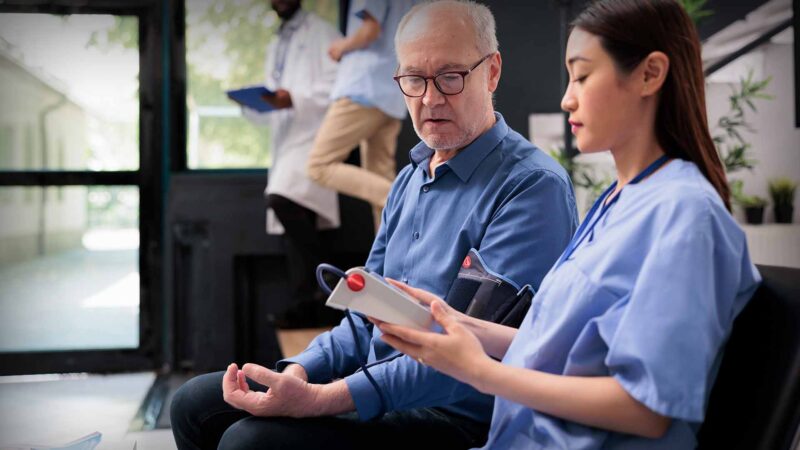INTEGRATING ORAL HEALTH CARE ACROSS NON-DENTAL PROFESSIONALS: Part 1: How oral health and cardiovascular health, diabetes and cognitive decline are related
Associate Professor Rachel Martin, Adjunct Associate Professor, University of Melbourne & Western Sydney University & Director, Australian Network for the Integration of Oral Health (NIOH) & Director, Australian Dental Research Foundation
Dr Ajesh George, Professor of Interprofessional Oral Health, School of Nursing and Midwifery, Western Sydney University & Co-Founder & Director, Australian Centre for Integration of Oral Health – ACIOH
SEGMENT
Filmed in Melbourne & Liverpool, NSW | January 2025
Poor oral health can contribute to or exacerbate several systemic health conditions due to the close connection between oral bacteria, inflammation, and systemic processes. These conditions include cardiovascular health, diabetes, respiratory health, cognitive health, pregnancy and birth outcomes.
The Australian Network for the Integration of Oral Health (NIOH) was founded in 2017 to promote and drive the alignment and integration of oral and general health systems. The mission of NIOH is to promote collaborative practice among various health professionals, enhancing access to oral health services and encouraging early preventive care. NIOH has over 120 members across universities, government agencies, not-for-profits, consumer groups, and industry within Australia.
Australian Health Journal spoke to Associate Professor Rachel Martin, Director at NIOH about the oral health being intricately linked to overall health, particularly concerning two prevalent diseases: periodontal disease and dental caries, which often go untreated.
Assoc Prof Martin, talks about primary healthcare practitioners playing a vital role in early intervention by proactively asking patients about symptoms such as loose teeth and bleeding gums. She comments on AIHW statistics on Australians hospitalised despite potentially preventable oral conditions, underscoring the need for timely care.
The Australian Centre for Integration of Oral Health (ACIOH), is the research arm of NIOH. Dr Ajesh George as Co-Founder & Director, of ACIOH spoke to Australian Health Journal about the opportunities that clinical professionals, in dental health care and general health care can play in integrated models of health care and on prevention, early intervention to reduce the burden of disease in Australia.
To see the Australian Health Journal segment, “Integrating oral health care across non-dental professionals, Part 1: How Oral Health and Cardiovascular Health, Diabetes and Cognitive Decline Are Related”, click here.
You Might also like
-
Unleashing the potential of Paramedic skills and knowledge
According to a prominent paramedicine academic and researcher, paramedics have the potential to provide much-needed care in the community, changing the traditional healthcare model. Research points to paramedics having a wider healthcare workforce impact based on their ability to identify and fix problems 24/7.
Dr. Brendan Shannon is Head of Postgraduate Programs in the Department of Paramedicine at Monash University and a member of The Australasian College of Paramedicine. His interests including refining healthcare models, to ensure underserved communities receive requisite care. These alternative care pathways, like outreach programs, can work out of hospitals to provide care in underserved communities with social and complex chronic conditions.
-
Entering The New Health Frontier
A new parliamentary report ‘The New Frontier: Delivering better health for all Australians’ is recommending significant reforms to the health care system to ensure Australians have better and faster access to the wave of new medicines and technologies.
The bipartisan report makes 31 recommendations to reform Australia’s system for the regulation and reimbursement with the hope that patients will receive faster access to the latest medicines and technologies.
-
Generosity of spirit in teaching
The Ramaciotti Medal for Excellence is considered one of the most prestigious awards in biomedical research in Australia and is highly sought after by researchers in the field.
In 2022, Professor Matthew Kiernan was the recipient of the Ramaciotti Medal for Excellence and the associated $50,000 award.
Australian Health Journal spoke with Professor Kiernan to hear about his journey in medicine and science to try and uncover and understand diseases and his generosity of spirit to pass on what he has learnt.



